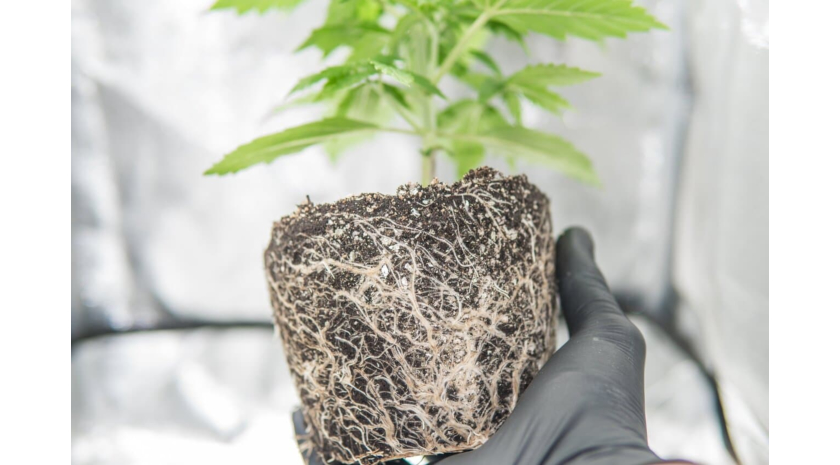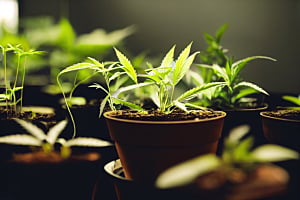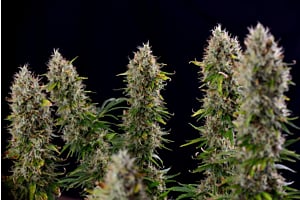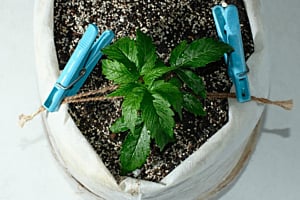Growers and breeders are constantly exploring fascinating ways to enhance weed. Using mycorrhizal fungi in cannabis cultivation is an incredible example of this. Are you interested in learning about a fantastic way to boost the health, yield, and quality of your cannabis cultivars?
Research into cannabis growing unearths the benefits of old and natural methods of plant enhancement. There’s a renewed focus on using organic applications like mycorrhizal fungi. Mycorrhizal fungi are among the best ways to help plants thrive, but what are they?
Join us as we explain everything there is to know about using mycorrhizae for weed and how these fungi can improve your cannabis production.
Let’s take a deep dive!
What are mycorrhizae?
Mycorrhizae are beneficial fungi that live in symbiosis with a plant, and both thrive as a result. This fascinating arrangement happens to some degree with most plant life on land. Mycorrhizae have existed for over 400 million years. They’re responsible for plant life evolving from water to land, and most still rely on these fungi to survive.
These incredible fungi significantly help ecosystems across most of the planet’s land mass. Mycorrhizae regulate soil chemistry underground, so the plant life above can flourish. They attach themselves to the roots of a plant and form hyphae which act as a secondary system. It’s similar to how a pathogen works, but this co-dependent relationship benefits both parties.
Hyphae are the primary mode of growth in fungi. Underground, they act similarly to the roots of a plant, absorbing nutrients and returning them as sustenance.
Many people are looking into organic products in regular life to boost their own health, and the 420 scene is no different. Marijuana growers are still learning more about this remarkable natural occurrence. Using mycorrhizae for cannabis cultivation is more popular than ever.
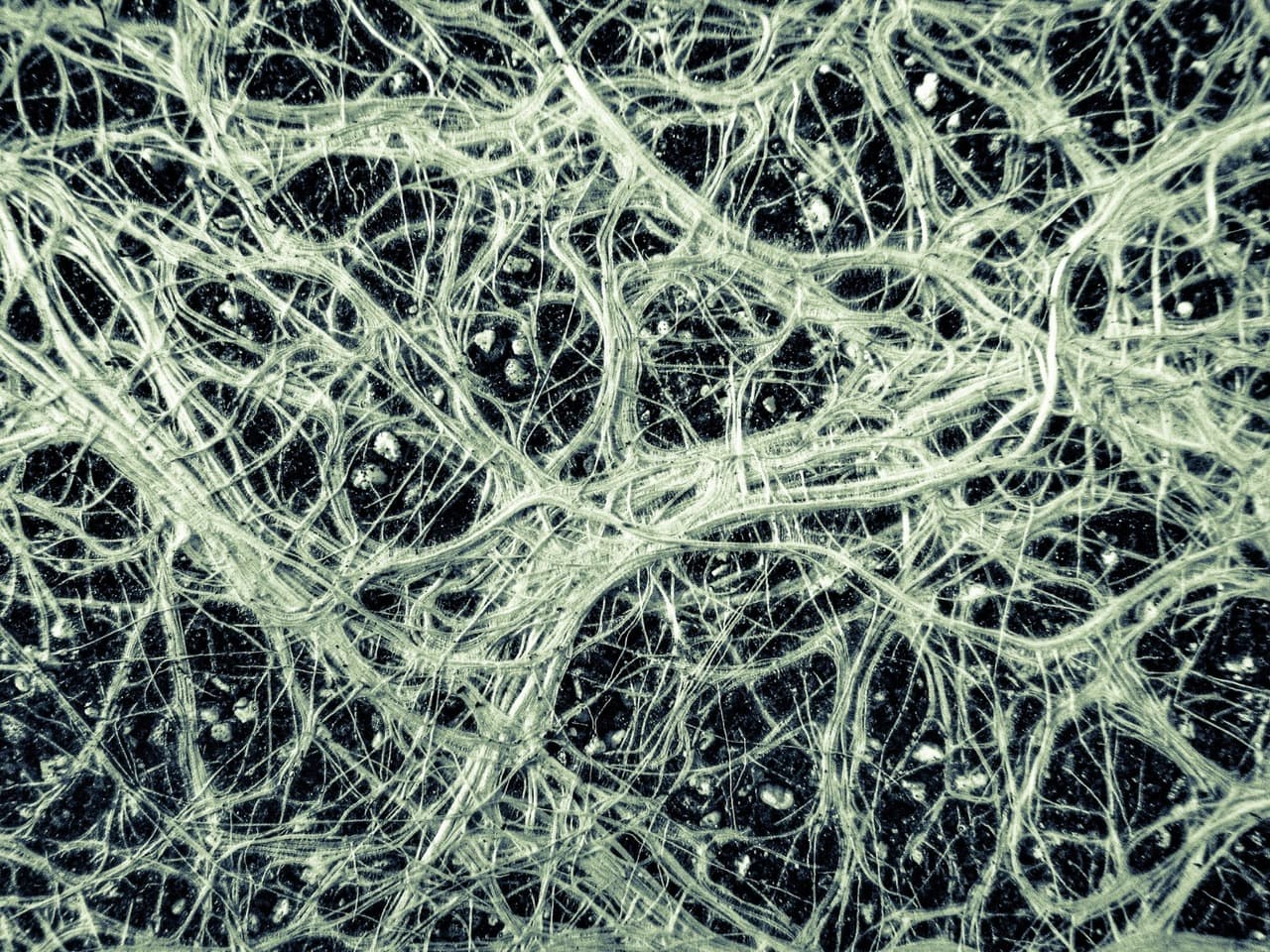
What do mycorrhizae do for cannabis plants?
Mycorrhizae help your marijuana plants in almost every way, whether you’re growing cannabis indoors or outside. They do this by permeating the weed’s root system, forming hyphae.
The hyphae act as an extension of roots in the soil. They branch out and retrieve more nutrients for the cannabis plant to absorb. In return, the mycorrhizae feed on excess carbon produced by the weed.
Mycorrhizal fungi are naturally present in most soil but in relatively small amounts. There are concentrates of these fungi available specifically for growing marijuana. We recommend using these to maximize the reach and nutrient absorption of the hyphae.
The type of cannabis doesn’t matter; mycorrhizae help autoflower, feminized and regular strains reach their full potential.
When cultivating cannabis, this nutrient exchange has numerous benefits for your weed plant. Let’s take a deeper look at how these fungi can help marijuana growth:
- Mycorrhizal fungi maximize and supply your plant with nutrients from the surrounding soil.
- The fungi break down nutrients in the soil, making them easier for cannabis plants to absorb.
- They defend weed plants against mold and pest infestation by enhancing the roots' cell walls.
- Mycorrhizae reinforce the plant making it sturdier in harsh conditions.
- Using mycorrhizae can strengthen your plant, making it more resilient to shock.
Don’t underestimate the natural benefits of using mycorrhizae in cannabis cultivation. They work wonders for your crop, whatever your growing set-up. The symbiosis can result in greater yields and beautiful sticky buds of higher quality.
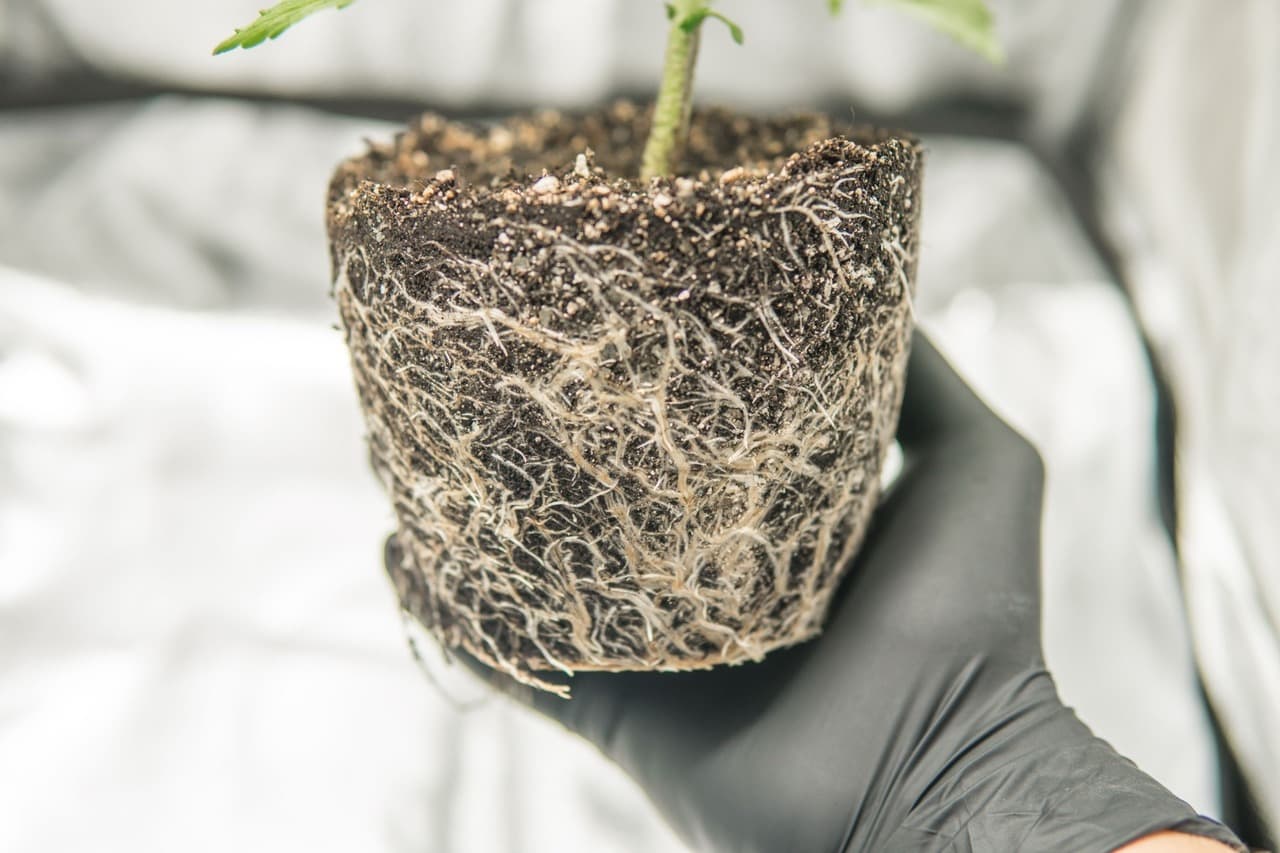
5 types of mycorrhizal fungi
Mycorrhizal fungi exist in various forms, operating in unique ways.
Ectomycorrhiza and endomycorrhiza are the two primary classifications covering all mycorrhizal fungi. There are a variety of sub-species within these categories.
Let’s look at five known types of mycorrhizae to explain some important distinctions:
- Arbuscular mycorrhizal fungi (AMF): These are the most common type and are classed under endomycorrhiza. They permeate the roots of most land plants and form a mutually-beneficial symbiosis. This is the helpful mycorrhizae for cannabis.
- Ectomycorrhizal fungi (ECM): Ectomycorrhizal fungi form around the roots. They don’t need to permeate a plant deeply to establish an arrangement. This type accounts for less than 20% of land plant life and forms on specific trees and bushes.
- Orchid mycorrhizae: This variety is aptly named. They exclusively work with members of the Orchidaceae family, playing an essential role in flower germination.
- Ericoid mycorrhizae: These fungi are in places like forests and bogs where the soil is nutrient-deficient and acidic. They’re capable of breaking down nitrogen in areas where it’s limited.
- Monotropoid mycorrhizae: Monotropoid fungi engage with plants that rely entirely on mycorrhizal symbiosis to source carbon. Coniferous forests depend on these fungi due to a lack of light, where photosynthesis is difficult.
Fungi are notable for many reasons. They have unique DNA compared to other vegetation and often behave more like an animal or parasite than a plant. Mycorrhizal fungi are common but also the most essential type, especially when it comes to cannabis production.
The best use of mycorrhizae in cannabis cultivation is dependent on numerous factors such as:
- Whether you're growing indoors or outdoors
- The type of grow equipment you have
- The amount of space the roots have to expand in the soil
- The overall conditions your crop is growing in
These factors all play a role in some way. The most essential thing to know is how best to introduce mycorrhizal fungi to your cannabis grow operations.
How to introduce mycorrhizal fungi to your cannabis grow operations
Many organic nutrients for cannabis development are now available as products specifically designed for the purpose. These provide the perfect chemical ratio and detailed instructions for correct application.
We recommend using specifically prepared mycorrhizal products like these for the best results.
Here are some of the best methods for applying mycorrhizal fungi to a cannabis grow operation:
- Mix your inoculant into your substrate: This is an easy method. Simply combine your mycorrhizal with your substrate, so the fungi are in all soil areas. Doing so ensures the best chances of successful contact with the roots.
- Prepare the planting hole: Before placing your weed in a new home, apply the inoculant to the base of the hole. It will ease the transition and reduce shock. Do this every time you transplant to ensure the best use of mycorrhizae with cannabis.
- Coating or dusting the root ball: This method is for when you’re transplanting. Place your inoculants in a container and wet your soil. Then place and move the root ball so the mycorrhizae cover the bottom and sides.
- Sprinkling: Another simple method is sprinkling your inoculants onto the root ball when transplanting.
Fun times with fungi
Now you’ve explored the magical world of mycorrhizae, it’s time to have fun cultivating healthy and bountiful cannabis plants.
Using mycorrhizae with cannabis is excellent if you want to boost your marijuana plants with other nutrient products. It’s also the ideal alternative for people looking for an all-natural approach to growing weed.
Mycorrhizal fungi can take your crop’s quality to the next level and provide healthy, resinous buds with sparkling trichomes.
You need to see the benefits for yield to believe them. Start growing with mycorrhizae, and watch your plants produce more bud than ever.
Perhaps you’re a novice or an advanced cultivator looking for an easy time? Check out our fantastic range of beginner weed seeds and start growing with minimum fuss.
Looking for the perfect strain to start growing with mycorrhizae? Check out our store for the best strains available and find the perfect one for you.
Frequently asked questions
Are you after some instant facts about the best use of mycorrhizae for cannabis growing? Here are a few commonly asked questions in the cultivation community.
Can I add mycorrhizal fungi after planting?
Adding mycorrhizal fungi after planting is encouraged, but you need to know how to do it correctly.
We recommend applying mycorrhizae whenever you move or repot your weed plant. It reinforces the symbiotic arrangement and benefits the cultivar further.
How often should you apply mycorrhizae?
It’s important to understand how often to apply mycorrhizae to a cannabis plant for the best results. Knowledge equals powerful marijuana growth.
It’s best to start at the germination stage to maximize the benefits, as the fungi can start helping sooner. Then apply myco again when planting your seedling.
We also advise additional applications throughout your marijuana growth cycle each time you transplant. Doing so ensures the mycorrhizae maximize their bond with the root system, enhancing the benefits they provide.
Do mycorrhizae help seeds germinate?
Studies and anecdotal evidence indicate mycorrhizae do help seeds germinate. If you prepare your growing area with these fungi first, they’re already improving the soil you place your seed in.
Seeds treated with mycorrhizae can benefit and show results in the following ways:
- A higher germination success rate
- Healthier and faster-growing seedlings
- Stronger seedlings with a greater chance of avoiding shock when transplanting
The benefits of mycorrhizae in cannabis cultivation can be evident from the get-go if you apply it when germinating.

 THC
THC